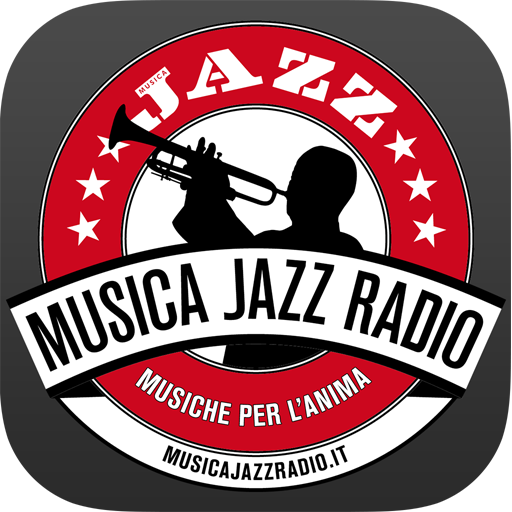
Enrico Rava (tp) Steve Lacy (ss) Johnny Dyani (b) Louis T. Moholo (d)
"Institute Di Tella", Buenos Aires, Argentina, October 8, 1966
Forest ESP-Disk' ESP 1060
Zoo -
* Steve Lacy - The Forest And The Zoo (ESP-Disk' ESP 1060, ESPCD 1060)
Durante 1966 Steve Lacy realiza lo que pretendía fuera una gira por Sudamérica. A mediados de la década del sesenta Buenos Aires era un paso obligado. Obligado en el sentido artístico o cultural, como se quiera, pero no en el que más tarde el destino le depararía.
Lo cierto es que en realidad la gira por estas tierras tenía una finalidad, no oculta, de tipo económico: el destino final era Europa en busca de trabajo. De hecho, iba a terminar en Italia (previo paso fugaz por Nueva York) donde se conecta con el grupo experimental “Musica Electronica Viva”.
Más allá de esto, está claro tambien que Lacy era un artista. Buenos Aires, con sus males de época, vivía una efervescencia cultural inédita por aquellos años. Los argentinos estaban en boca de todo el mundo también por sus cosas buenas, contrariamente y con nostalgia, a lo que puedan creer algunos en estos días.
Este espíritu de artista que, además, en ese momento estaba experimentando un convulsionado paso al mundo del free jazz, iba a ser suficiente para que su estadía en “La Reina del Plata” haya dejado su huella: el 8 de octubre tocó en vivo en el Instituto Di Tella (dónde más?). Un indicador de la importancia de esta presentación es que quedó grabado en un disco oficial en el sello ESP (1060 - LP) llamado “The Forest and the Zoo”. Junto a él estaban: Enrico Rava en trompeta, Johnny Dyani en bajo y Louis Moholo en batería. Un super cuarteto !
Lo imagino a Lacy paseando por Av. Santa Fe y Sarmiento recorriendo “los bosques y el zoológico” del barrio de Palermo
La dictadura de Onganía iba a sorprenderlo (no así, una vez más, a los argentinos…). No desconocía que esas atrocidades existían, al fin y al cabo era una persona cosmopolita y mundana (tal vez por eso hoy podamos contar esta historia…). Desconozco las circunstancias precisas pero parece ser que estuvo obligado a quedarse en Buenos Aires más de la cuenta (nueve meses?). Sus biógrafos, con menos detalles que yo, hablan de “la desastrosa gira por Sudamérica” mezclando, como hacen muchos, a las personas y sus gobiernos como quien mezcla el fútbol con la bandera. Hay cosas que los argentinos se merecen pero otras estoy seguro que no…
Quien tenga más datos sobre esta historia por favor que avise. Me encantaría conocer el final.
Posted in Argentina, Biografías, Jazzmen | No Comments »
http://www.jazzero.com.ar/category/poltica/
AMG:
"According to the liner notes of this new edition, Steve Lacy walked into the ESP-Disk offices in New York in 1966 and offered to sell Bernard Stollman a tape of a concert he had recorded with his quartet during a concert in Argentina (where they had been stranded). That band was truly an international one: Lacy and Italian trumpeter Enrico Rava made up the front line, and the rhythm section included South African expats Johnny Dyani on bass and drummer Louis Moholo — who had both been members of the Blue Notes and the Brotherhood of Breath with Chris McGregor. Engineer Ken Robertson brought the tape back to Stollman in 1992, claiming the entire album had been recorded out of phase. This makes sense given the lags on the original. The remastered and reissued CD version issued in 2008 claims to have fixed that problem. It hardly matters. The musical interaction that takes place over 40 minutes here is compelling, fraught with openness and the willingness to explore the margins. Unlike a lot of the other "new thing" recordings made at the time, the focus here is unusually rich, expressive, colorful, and easy on the ears — though it may not have been at the time. Lacy, who came up playing in Dixieland groups before he heard Thelonious Monk, had been increasingly influenced by the music of Ornette Coleman, John Coltrane, and Albert Ayler. His own exploration of his chosen instrument, the soprano saxophone, is all evident here in the manner in which he is considering new tonal, textural, and color possibilities as a soloist and as a functioning member of an ensemble. This is white-hot musical invention — it meanders, swoops, soars, digs in its heels, and above all offers a staggering kind of communication between four players who took nothing for granted and knew that everything was up for grabs. Even at this early stage of Lacy and company's investigation of free and improvised music, there is a healthy melodicism, rich counterpoint exchanges between Lacy and Rava, and a wildly expansive rhythmic palette employed by Dyani and Moholo. This is not normally considered an essential part of Lacy's very large catalog, but in the 21st century it does deserve to be heartily and critically reexamined. The cover painting by the late artist Bob Thompson makes the set worth owning simply for its beauty."
The Argentinian escapade
In 1966, Lacy left for Buenos Aires along with Enrico Rava (tp), Johnny Dyani (b) and Louis Moholo (dm). What was originally intended to be a short tour turned into a nine-month farce : “ What a misadventure that was. But good things can come out of bad times, and I’m glad we made the record (’The Forest and the Zoo’). At the time there were still Nazis hiding out in Argentina, and tanks in the streets. Soldiers were arresting people for listening to the Beatles, it was a real nightmare. Like idiots, we arrived with nothing, not even a ticket home. It was tragicomic, tragic because we were ill-treated and hungry, especially the two Africans. People would buy us drinks but never meals. At the end, though, we had our little group of fans who would come see us at parties, private concerts organized for us in clubs, on television. We managed to find work thanks to two or three friends, a composer, a painter, a poet… rich people. The musicians were friendly and the artists generally liked our music, but they didn’t have the power. For nine months, we were in the shit. We made the record at the end because I didn’t want the music to disappear without a trace.” South African musicians were not much of a presence at the time. “I think it was Chris MacGregor who had discovered them, and I stole them from him. I went to london in ‘65 to meet them. I knew they didn’t have much work and I could offer them some. I already knew Louis Moholo, whom I’d heard with Roswell Rudd in Amsterdam. But even before I heard him I had talked with him and knew he was the drummer I wanted. I asked him if he knew a bass player and he recommended Johnny Dyani, whom I went to see play in London.”
p.stubley@shef.ac.uk re
http://www.mfowler.myzen.co.uk/?page_id=114










%20Poster.jpg)




.jpg)


.jpeg)










http://barin99.livejournal.com/337354.html
ResponderEliminarHola, ¿supiste algo sobre la relación de Lacy con el escritor Néstor Sánchez?. Tengo entendido que vivió en su casa. Gracias
EliminarLos comentarios atribuidos a Lacy (Argentinian Escapade) son todas mentiras. Tuvimos el golpe del militar Ongania a fines de junio 1966, en dos horas echaron al presidente caido en desgracia, con el apoyo masivo de la mayoria de los militares, politicos, sindicalistas, empresarios, periodistas y gente comun, y absolutamente sin incidentes. Luego hubo algunas noches de disturbios estudiantiles en la Universidad Nacional, la unica reaccion ante el golpe, y hubo gente importante de las ciencias que entonces decidio irse del pais. Todo habitual y para nada raro en cuanto a lo que viviamos por entonces. El grupo de Lacy vino en septiembre, si bien es cierto que se perseguia como siempre a los jovenes por su aspecto, como usar el pelo largo, o por sus inclinaciones sexuales, no habia tanques ni nada raro en la calle, todo "normal", no hacia falta reprimir con militares, la policia sobraba para hacerlo. No se si Lacy fue estafado o si negocio mal la visita, lo cierto es que fue un fracaso, nadie estaba preparado para escuchar esa musica, no se recaudo nada, y quedaron varados sin dinero. Pero Rava y el se las ingeniaron para irse pronto, me consta que Lacy volvio a New York apenas grabo el disco en octubre en el Di Tella, debe haber estado como maximo un mes, y no me consta que hayan tocado en ninguna parte despues de las presentaciones anunciadas previamente para la visita, lo unico adicional fue lo del Di Tella, porque Lacy hizo todo lo que pudo para poder grabar el disco y llevarse la cinta que luego vendio. Rava tenia parientes que le facilitaron la vuelta a Italia, el verdadero drama lo sufrieron Dyani y Moholo, que tuvieron que vivir muchos meses mendigando para comer, no tenian posibilidad de tocar su musica, ni siquiera tenian instrumentos propios, no hablaban el idioma, en el ambiente local los musicos importantes los rechazaban abiertamente, buscando excusas para no tocar con ellos, aunque no hubiera ni un contrabajista ni un baterista que tuvieran siquiera un nivel artistico cercano al de ellos. Fue muy triste y deprimente verlos en la puerta de los eventos de jazz de la epoca, afirmando que lo que se tocaba era obviamente "shit music", sin tener la menor oportunidad. Un dia, despues de tanto tiempo, estimo minimo 18 meses, desaparecieron. Fui testigo de su drama
ResponderEliminarQue interesante
EliminarYo toque con Louis Moholo en Sudafrica
Me interesaría saber más sobre su visita a argentina
Habrá alguna manera de contactarte?